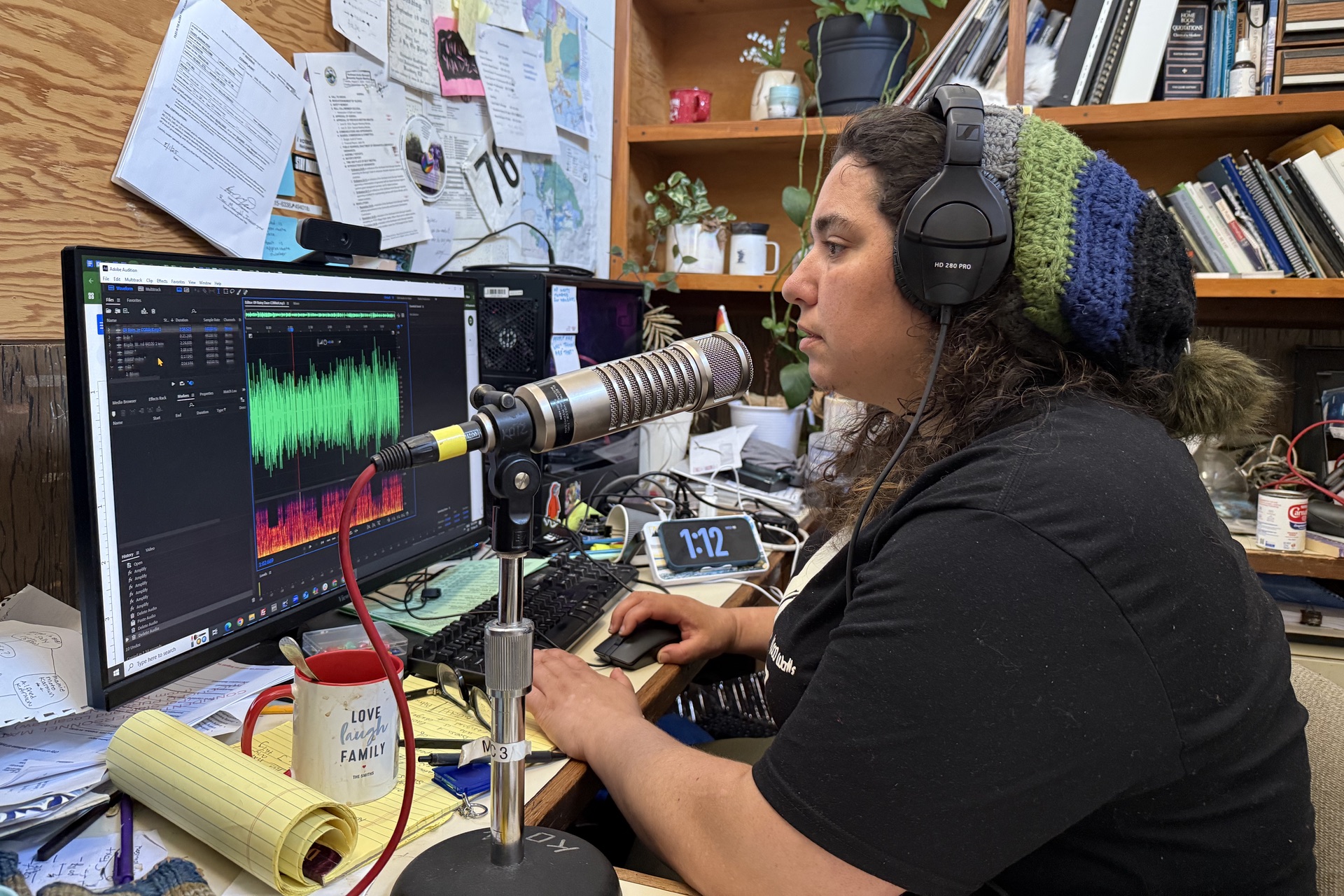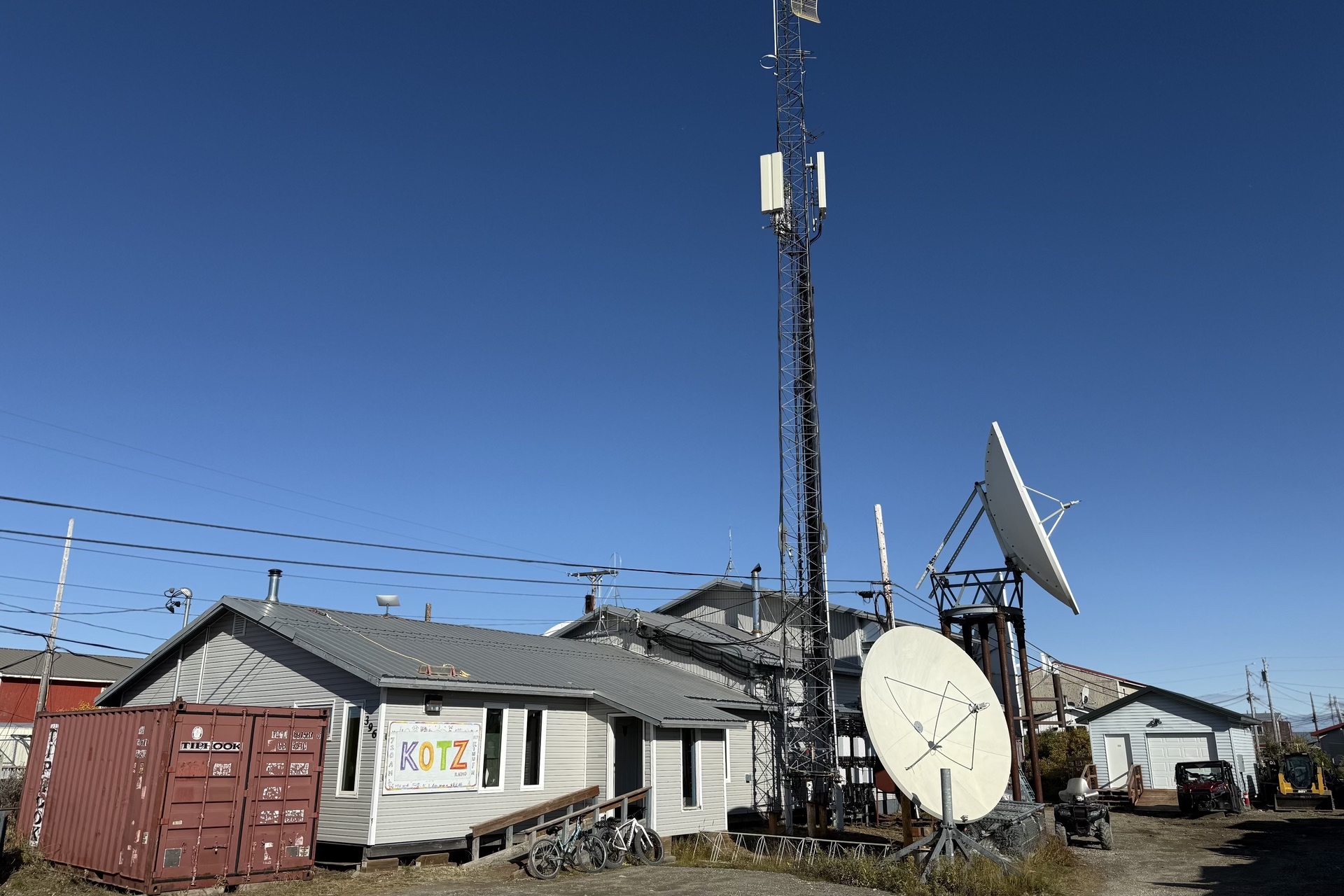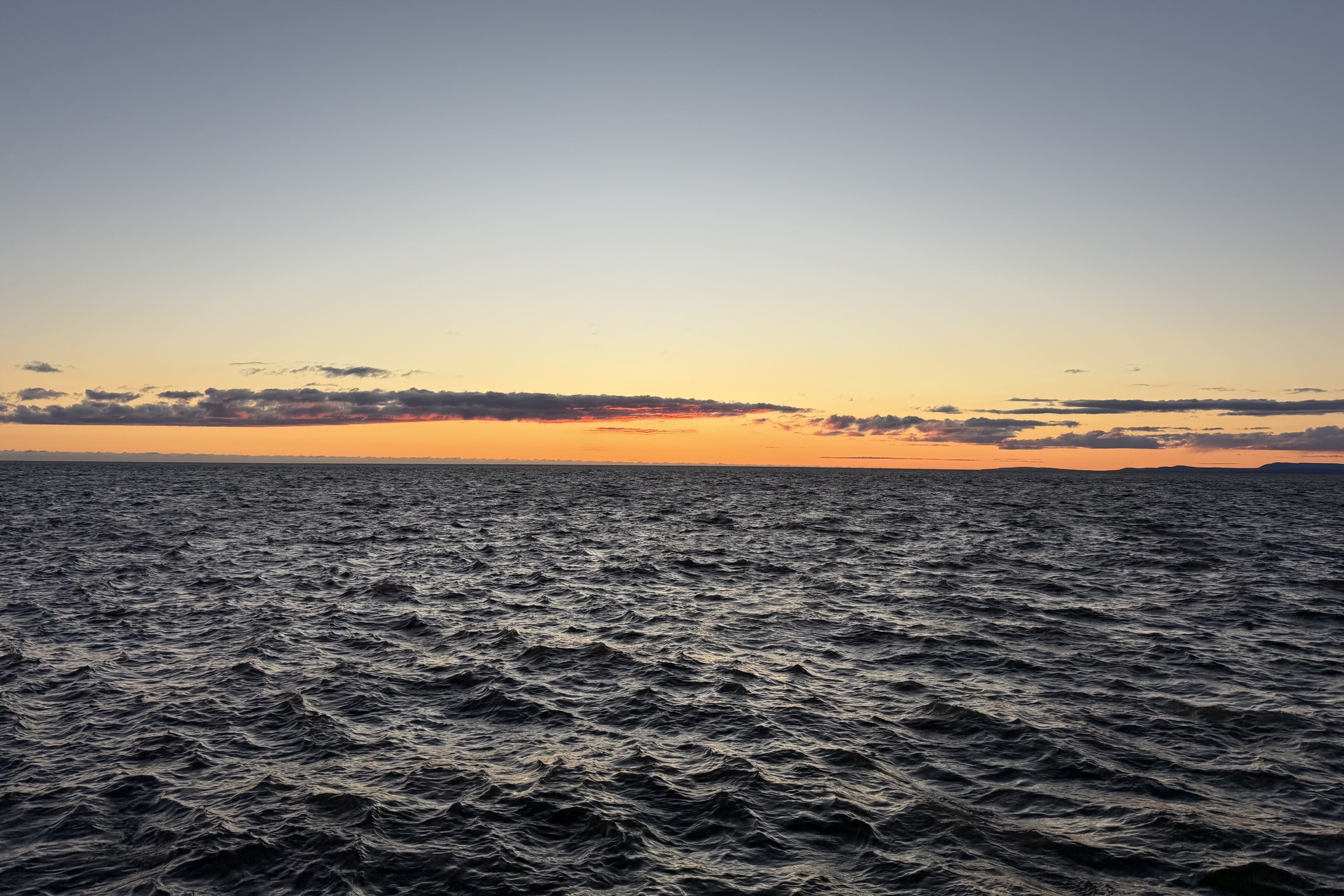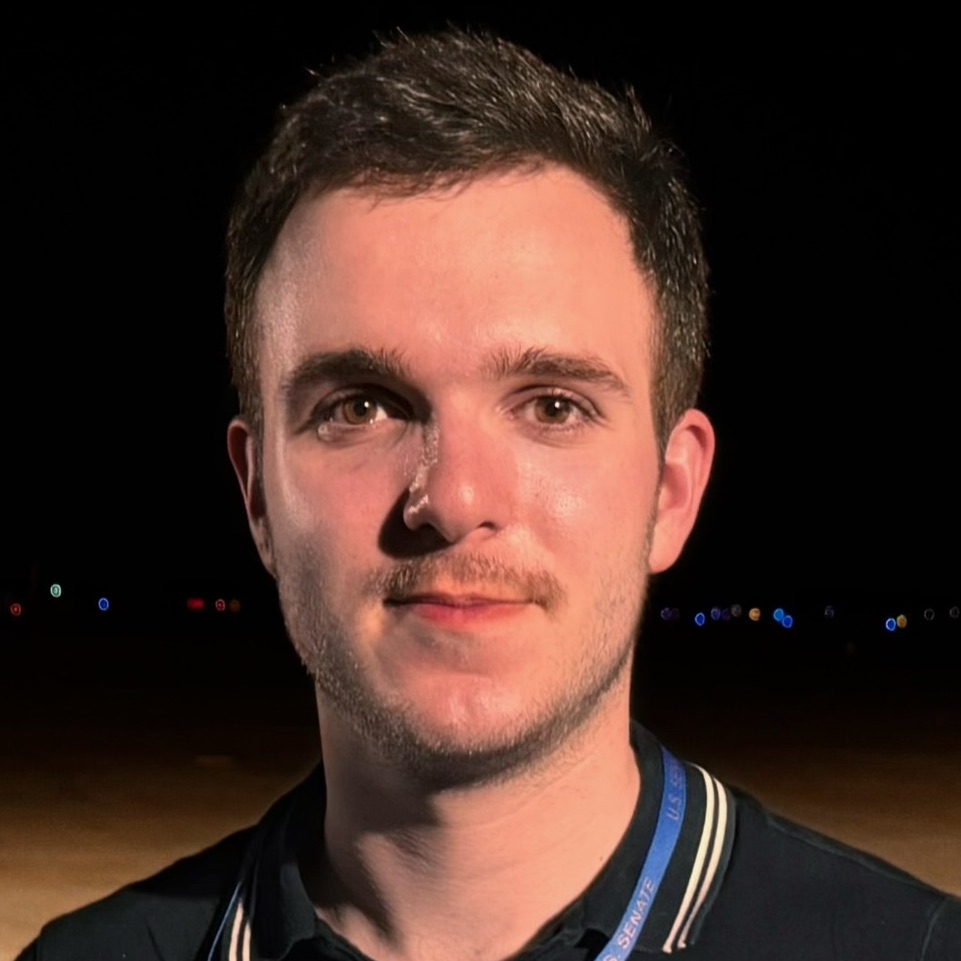In the remote Arctic town of Kotzebue, Alaska, some residents still talk about the Dairy Queen that closed several years ago. They also talk about what’s at risk of closing next: the region’s lone radio station.
Since 1973, KOTZ has delivered the news to Kotzebue, population 3,102, and several other small, sparse villages that collectively are home to about the same number of people. Some 30 miles north of the Arctic Circle, KOTZ is the only source of local news for a region larger than Indiana, but with just 0.1% of its residents. For five decades, the station has been a lifeline, connecting remote communities throughout Northwest Alaska and to the rest of the state and country.
But those bonds are at risk since Congress voted in July to claw back more than $1 billion in federal funding to public media stations like KOTZ, an NPR affiliate. The rescission is expected to disproportionately impact news stations in rural areas, which have fewer local funding options than more affluent and populous areas so tend to depend more heavily on federal support. Since the unprecedented funding reversal, KOTZ and other stations have been scrambling to make up shortfalls and stave off the prospects of program cutbacks, staff layoffs or permanent closure. Of NPR’s more than 240 member stations, 70 to 80 could shutter as a result of the cuts, the network estimates.
For a station like KOTZ, where federal funds supplied about 40% of the budget, the abrupt cut poses an existential threat. The station has ramped up fundraising efforts and has enough money to continue operating until the spring. A longer-term solution remains elusive. Whether KOTZ will close has become a perennial question for the station and the thousands of people who rely on it for local news, weather forecasts and emergency alerts. “This is silencing the voices of rural Alaska,” says KOTZ’s news director, Desiree Hagen. “That’s a real injustice.”
The stillness that envelops Kotzebue is punctuated by the squawking of seagulls, the rumbling of residents’ four-wheelers and the rhythmic lapping of waves against the shore. The town lies on a sand spit at the end of a narrow peninsula near where the Kobuk, Noatak and Selawik Rivers end. It’s so far west that KOTZ’s signal reaches part of Russia’s eastern coast.
In Kotzebue, which is the seat of the Northwest Arctic Borough, about 70% of the town’s population is Iñupiaq, an Alaska Native group that traditionally inhabits a huge swath of the state’s northwest. The Iñupiatun name for Kotzebue is Qikiqtaġruk, which means “almost an island,” because the hamlet is nearly surrounded by water. In the summer, Kotzebue is bathed in sunlight; during the frigid winters, the town is cloaked in darkness. Like many places in rural Alaska, Kotzebue isn’t on the state road system, making it accessible to outsiders only by plane or boat. When I visited in September, the talk of the town was a brown bear that had been spotted near the Chinese restaurant Empress. “Kotzebue is like Alaska on steroids,” Hagen says. “You have to have a lot of strength to live here.”
When federal lawmakers began calling for cuts to public media funding in the spring, KOTZ’s general manager, Lenora Ward, who was born and raised in Kotzebue, had a feeling this would be different from the times Congress had threatened to defund public media. Given the Trump administration’s various funding cuts and attacks on the press, Ward had little hope that things would turn out in public media’s favor. “I didn’t think we had a prayer,” Ward said. “What was going through my mind was: ‘What is the easiest, fastest way to make money?’”
In July, Ward’s fears became reality. Despite broad support for public media programming, the Senate voted 51 to 48, and the House of Representatives voted 216 to 213, to claw back $1.1 billion in funds previously allocated to the Corporation for Public Broadcasting. The CPB, in turn, cut all federal support for NPR, PBS and their hundreds of member stations across the country. Hagen, the news director, was at the KOTZ office when she learned the news. “I just cried,” she said. “It was heartbreaking.”

Originally from Virginia, Hagen moved to Alaska in 2008. It’s where she says she’ll die one day. The 41-year-old started working at radio stations in Homer in the south and Bethel in the southwest before moving to Kotzebue in 2023. The population may be small, but there’s no shortage of stories to tell in this corner of the Arctic, says Hagen, the station’s lone reporter and, by her assessment, the northernmost journalist in the United States. “I feel like I produce so many stories, and also not enough stories,” Hagen told me one morning in her office in the squat, grey building that KOTZ calls home.
Sitting at her desk, which is cluttered with reporting notes and recording equipment, Hagen was working on a story about record rainfall and erosion in the region and another about a recent marathon in Kotzebue, which was considered the first held in Alaska above the Arctic Circle. The list of other topics Hagen is tracking runs long: climate change; the powerful NANA Regional Corporation, a for-profit entity representing native Alaskans; the controversial Ambler Road project, which risks threatening the region’s already beleaguered caribou population; the nearby Red Dog zinc and lead mine, which employs some of Kotzebue’s population and is set to close in a few years; the potability of tap water. There are many competing interests in rural Alaska yet hardly enough journalists to examine them. But without KOTZ, “there wouldn’t be a lot of accountability in general,” Hagen said.
In Alaska, 86% of communities cannot be reached by road. In remote parts of the state, many people don’t have internet access or cellphone service. (Nationally, about one in six households, mainly in rural areas, don’t have internet access, the National Telecommunications and Information Administration estimated in 2024.) The isolation of Kotzebue and villages like it around Alaska underscore the importance of KOTZ in people’s daily lives — and what’s at stake if it shutters.
Every half hour, KOTZ broadcasts weather forecasts for Kotzebue and other towns in the region, including Deering and Kobuk. The frequency of the forecasts reflects how quickly — and dangerously — local weather can change. “Weather is really important here. Life-and-death kind of situation,” said Ernie Norton, an 82-year-old Kotzebue resident and KOTZ volunteer.
Last October, Kotzebue was hit by a storm that devastated the area with severe flooding. Through the storm, KOTZ kept broadcasting. “All of a sudden, it was time to switch to emergency reporting mode,” Hagen said. Some homes were destroyed, much of the town lost electricity, and dozens of people had to evacuate from their homes, she said. The small airport was flooded, so the National Guard couldn’t send help for a few days.
Beyond extreme weather events, forecasts are an important part of daily living, particularly among indigenous communities. Traditions of fishing, hunting and gathering are deeply ingrained among the people who have called this rugged terrain home for generations. Many residents have hunting cabins in rural areas. Knowing the weather is critical to hunting safely, especially when people are “at camp,” or out in more remote parts of the region.
When Kozebue resident Siikauraq Whitting is at camp, where she and her husband sometimes spend months, she says they drop everything when the weather report comes on. “That’s something that we listen to religiously,” Whitting said. “We know it’s going to be on every day, on the half hour. It’s been like that for decades. Hopefully it’ll be there for decades to come.”
Depending on the weather, it might not be safe to hunt or fish. If a storm is coming in, people might have to hurry home or find somewhere safe to hunker down. “The most important thing when we’re out there is the weather forecast,” says Cyrus Harris, who runs a hunting program in Kotzebue that provides tribal elders with food. If the radio stopped operating, “it would be more dangerous,” Harris added. And when people go missing, which is relatively common in winter, when people sometimes drive snow mobiles across frozen stretches of ocean or river, KOTZ broadcasts information — where they were last spotted, what they were wearing — to help find them.
Rural radio stations in Alaska also help foster community. For about 40 years, Norton has hosted a popular Sunday music show, featuring a range of genres, including Iñupiaq gospel music. For many Kotzebue residents, listening to the radio all day is just part of life. “We have the hots for KOTZ,” Whitting quipped. Youth basketball games are also a magnet for audiences. For the region’s basketball finals, teams from 10 villages travel by plane to compete in Kotzebue. “Not everybody can come,” says Ann Howarth, a KOTZ volunteer who broadcasts the games. “So they listen to the radio.”
Birthday wishes and death notices are also regular fare, informing relatives and friends in distant villages. An elderly woman in Kotzebue named Daisy Norton calls the station almost every afternoon with birthday messages for far-flung residents. “Communities are separated by hundreds of miles and are all connected by a single radio station,” Hagen said. There are other quotidian messages, too — a tribal elder who needs help unclogging a sink, someone lost a wallet. “This banter, this chatter, it brings people together. And I don’t want us to lose that,” U.S. Sen. Lisa Murkowski (R), a third-generation Alaskan, told me in September. “To feel like you’ve got a sense of community helps you get through some colder, darker winters.”

In Kotzebue, fears about what KOTZ’s closure would mean for the community are matched only by frustration toward the federal lawmakers who voted for the funding clawback. It’s unclear, some residents told me, whether the lawmakers don’t understand the rescission’s threat to rural communities or whether they don’t care. “It seems like we’re forgotten,” said Kotzebue Mayor Derek Haviland-Lie, who previously was the news director and an announcer at KOTZ. The disproportionate impact the cuts will have on rural areas fuels a broader sense that rural Alaska often gets the short end of the stick, some residents said. “Everybody’s concerned. It’s a lifeline,” Northwest Arctic Borough Mayor Dickie Moto told me.
It’s not unusual for rural Alaskans to harbor distrust toward people from the Lower 48. But what’s particularly troubling, some Kotzebue residents said, is that two of the three members of Alaska’s congressional delegation voted for the funding cuts. “It’s pretty dire right now. I can’t sugarcoat it,” said Murkowski, who voted against the clawback.
“There was extraordinary political pressure that was put on Republican members of Congress to go along with the rescissions request. And I felt that was unfortunate,” Murkowski said. But to some Kotzebue residents, the votes by U.S. Sen. Dan Sullivan and Rep. Nick Begich in favor of the cuts feel like a betrayal. “People will often pay lip service and say they’re working for rural Alaska because they want their vote,” said Hagen. Neither Sullivan, who was recognized with an award in 2020 for his support of public broadcasting, nor Begich responded to requests for comment.
News stations around Alaska and the country are feeling the fallout with varied levels of urgency. Recent fundraising efforts have helped, KOTZ’s Ward said, but in a poorer area like Kotzebue, fundraising alone won’t generate enough to save the station. “Everyone is at a loss for money right now, so I’m not really sure how we’re going to do this,” Ward told me. Report for America is financing Hagen’s salary, but that’s a temporary grant, and the station’s general operating budget is still short by tens of thousands of dollars. The station reduced its signal output from 10,000 watts to 5,000 to save money. “We’re going broke, so we’ve got to cut somewhere,” said Pierre Lonewolf, the station’s longtime sound engineer.
KOTZ doesn’t have plans to lay off staff, but a few hundred miles southwest, in Bethel, Alaska, the news station KYUK, where federal support counted for about 70% of funding, is preparing for layoffs and to significantly reduce staff hours in the new year. Sage Smiley, KYUK’s news director, says her position is being reduced from full time to just five hours per week. KYUK, which faces a $1.2 million budget gap, is the only source of local news for a region roughly the size of Oregon. On a national scale, of the 31 counties with stations that received more than 40% of their funding from federal sources, half are considered very rural, which means audience and local business donations aren’t able to make up the deficit, according to an analysis by Medill’s Local News Initiative. The Bureau of Indian Affairs in early October announced $4.5 million in one-time funding for 14 public stations across Alaska, including KYUK and KOTZ, but stations say the infusion won’t help much in the long term.
Even as philanthropic groups like the Knight Foundation and MacArthur Foundation pledge tens of millions in emergency funding for public media, newsrooms around the country are in similar predicaments. Multiple station managers said they’re trying to be creative, knowing that no silver bullet exists. KSJD in Cortez, Colo., hopes to narrow its deficit by increasing performances at its affiliate, the Sunflower Theatre. “It’s just one way that we’ll offset some of those cuts,” said the station’s executive director, Tom Yoder.
Besides their shared challenges, public broadcasters are united by a shared devotion to the work — and a grim awareness that if they shutter, commercial news stations are unlikely to replace them in markets that aren’t particularly lucrative. “No one who works here does it because we’re getting rich,” said Scott Smith, general manager of West Virginia’s Allegheny Mountain Radio, which received 60% of its funding from the Corporation for Public Broadcasting. “We put our hearts and souls into what we do, and it could end, and that’s an extremely difficult pill to swallow.”
Concern over KOTZ’s future is taking an emotional toll on staff. Ward had been trying to quit smoking, but she gave up after Congress passed the rescission. “The radio station needs money; give me a cigarette,” Ward said one September afternoon, before stepping outside for a smoke break.
For Hagen, the funding crisis has been a source of both anxiety and motivation. “Anger has been fueling a lot of my reporting,” she said. “My work is valuable, but having Congress treat it like it’s not makes me want to prove that even more.” But there’s a limit to how much inspiration can be borne from hardship. “I don’t think I’ve been taking care of myself,” Hagen relented.
Later that day, Hagen’s shift on air comes to a close around 9 p.m. She switches the radio to an automatic setting, so it can continue playing music throughout the evening until live programming begins again in the morning. “I feel exhausted,” Hagen says as she turns off the lights and locks up.
Before hopping on her bike to ride home, Hagen points to the sun, which is beginning to sink toward the horizon, its orange glow reflecting on the black ocean. On the other side of town, the full moon already hangs high in the night sky. This evening, the only noise is the howling of the wind.

